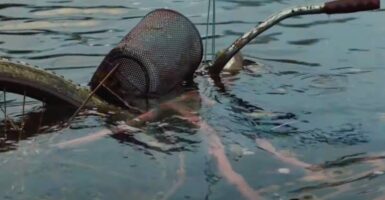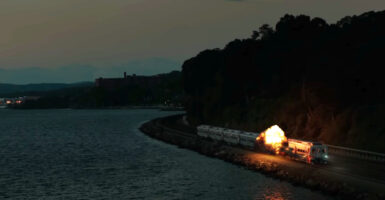Robots Can Now Swim 9,000 Miles Better Than You

Regardless of what kind of swimmer you are, there is a specific kind of accomplished pride that accompanies making a lap from one side of the pool to the other. You can look back and think, “I did that.” Now, if you were a robot built by Liquid Robotics, you could look across an entire ocean and say that.
Liquid Robotics is a California/Hawaii-based company that deals in, you guessed it, water-based robots, particularly their revolutionary Wave Glider, the first unmanned autonomous wave-powered robot. Last year, they sent out the Pacific Crossing (PacX) Wave Glider, nicknamed “Papa Mau,” from San Francisco, and over 9,000 miles and 365 days later, Papa Mau washed up to Hervey Bay near Bundaber, Queensland in Australia. 9,000 miles, people. Outside of spacecraft, I can’t think of another material item that wouldn’t be constantly malfunctioning, or even still working at all, by that point.
Though the distance shattered the Guinness World Record, Papa Mau’s purpose is purely informational. Throughout the pre-navigated trip, it collected and transmitted untold amounts of never-before-accumulated data about those vast stretches of ocean over this kind of timeframe. One particular bit of study mentioned was its incredibly detailed data capture of 1,200 miles of a chlorophyll bloom along the Equatorial Pacific, which indicates a propagation of phytoplankton, a foundation of ocean life and climate regulation. It faced storms and notoriously strong currents, it faced sharks, it gave a hat tip to the Great Barrier Reef. It is amazing and it will eventually take over most of our brains, drowning those of us unchosen.
The PacX Challenge is a contest whose honoree has presented the most impressive research abstract, designed to utilize the PacX information. The five recently announced finalists can be found at the above link. Luke Beatman, Oceanographer for LR and chairman of the PacX Science Board, defining the project’s value, says, “These scientists will conduct research into some of the world’s most challenging ocean issues ranging from measuring the ocean’s health and respiration to studying the ocean’s biomass — the most fundamental organisms critical to ocean life.”
It’s a life-affirming victory for the company, and oceanography in general. Once humans can build machines that can withstand the toughest of Mother Nature’s assaults, Pandora rumbles a thunderous cackle through the skies, clapping her hands in glee. There’s a rumor that it picked up an image of a very, very wide-eyed Ed Harris and Mary Elizabeth Mastrantonio, but declined to help them. But that’s just a rumor. And I realize it doesn’t make any sense within the context of The Abyss. A robot swam 9,000 miles. That’s what you should take away from this.
Check out a short video of its trip-ending recovery.












